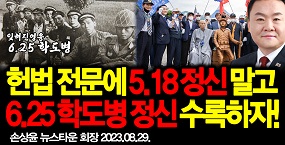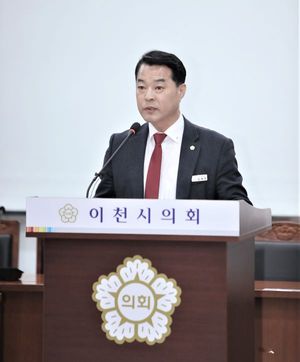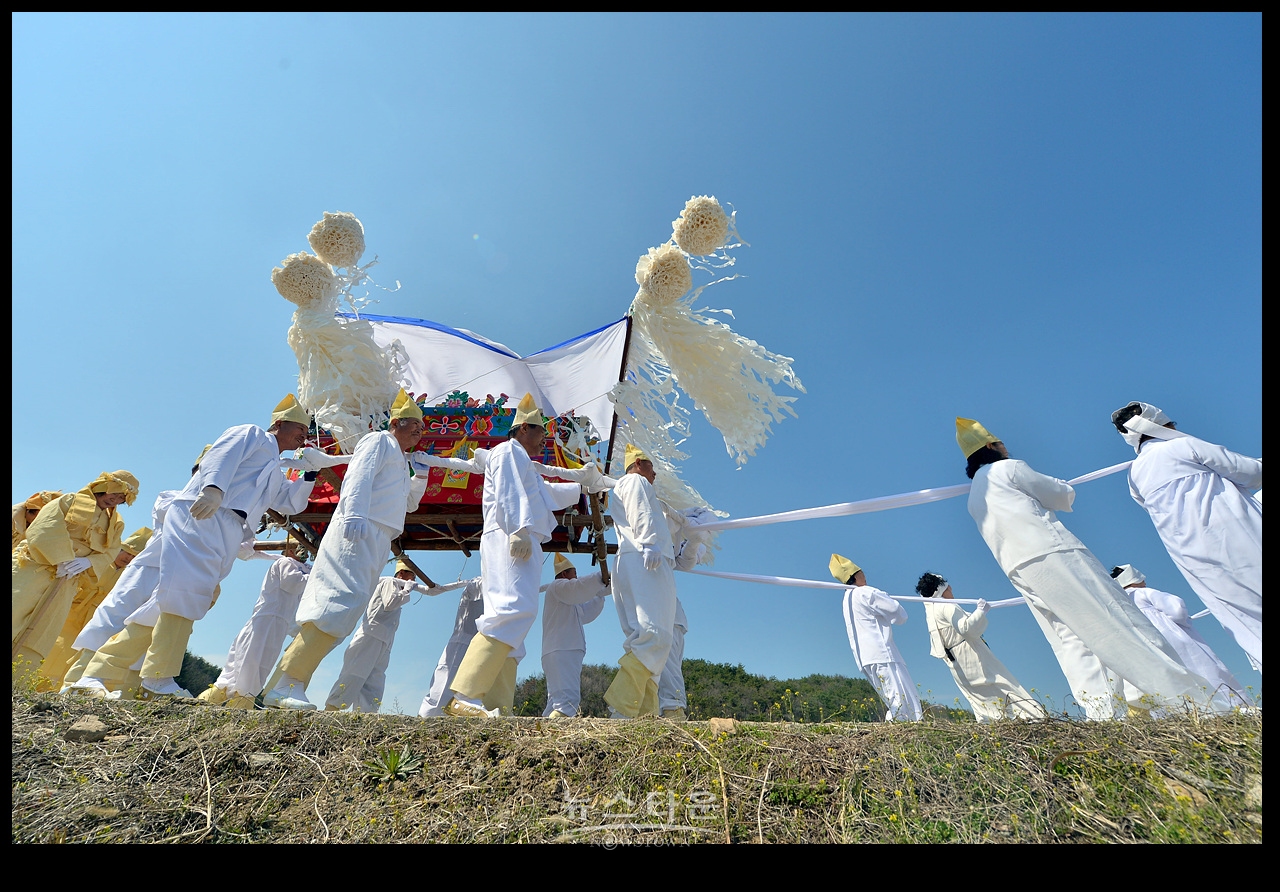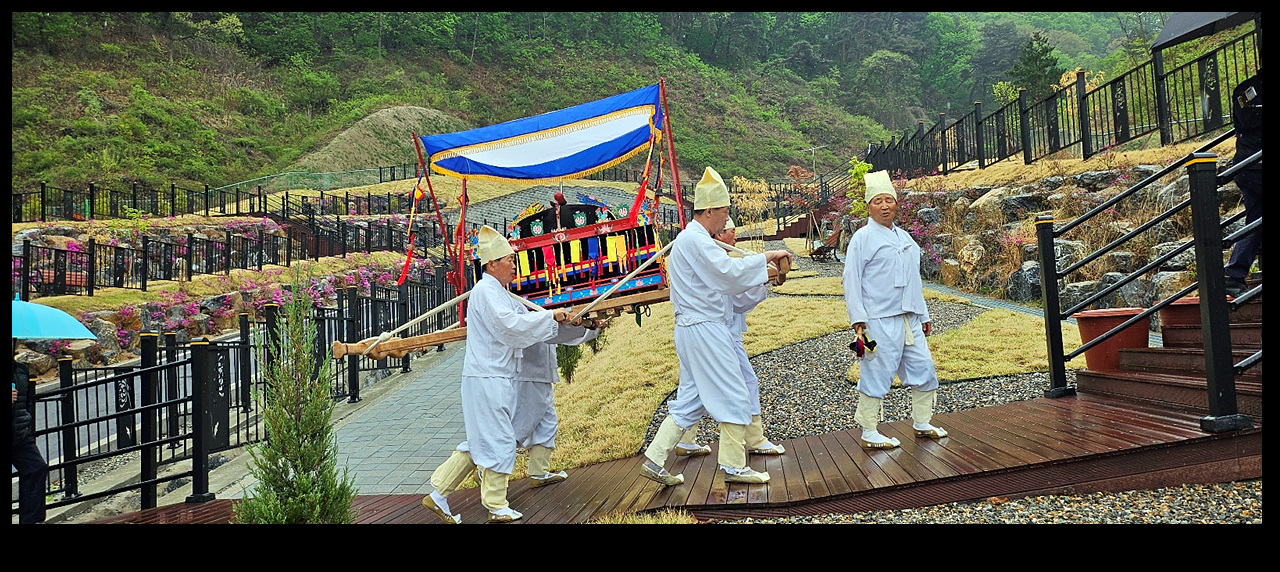아래 자료는 네티즌들이 제시하는 원문 번역과 원문이다.
OPLAN 5027-96
1994년 한반도 핵 위기 이후, OPLAN 5027 은 완전히 개정되어서, 미국과 북한 사이에 전쟁이 일어날 경우 일본 내 기지들을 사용할 수 있게 허용하는 새로운 협정이 포함되게 되었다. 일본 의회가 1999년 5월 24일 승인한 일미 방위 협력 가이드라인은 미국이 일본과 태평양 지역에 군사력을 배치해서 한반도에서의 전쟁에 대비할 수 있게 허용하고 있다.
OPLAN 5027-98
이어서 1998년 말에 확정된 OPLAN 5027-98 에서는 작전 개념들에 대한 수정이 이루어졌다. 지금까지의 OPLAN 5027 들에서는 (한반도에서 전쟁이 터질 경우) 북한의 도발을 저지하고 비무장 지대 너머로 퇴각시키게 되어 있었다.
OPLAN 5027-98 에서는 북진 작전에 명확하게 촛점이 맞추어져 있다. 한 고급 미국 관리에 의하면, " 이 계획이 마무리되면, 북한은 일체의 군사적 도발을 저지를 수 없게 될 것이다. (그들이 그런 짓을 저지른다면) 우리가 그놈들을 깨끗이 날려버릴 것이기 때문이다." 바뀐 계획은 " 국가로서 북한을 말살하고, 그 지도자 김정일의 통치를 끝내서, 한반도를 남한 지배 하에 두는 것이다. "
또한 서울에 대한 기습적인 생화학 무기 공격에 맞서는 것이 중요시되고 있다. 한국군은 신경 가스를 장착한 미사일 오십 발이면 서울의 1200만 시민의 최대 38 퍼센트가 죽게 될 것이라고 예측하고 있다고 한다.
새로운 계획은 인민군과 북한 정부를 '분쇄할' 작전을 담고 있다. 작전은 4 단계로 진행될 것이다: 북한 침공 전의 활동, 북한군의 공격 저지, 반격을 위한 준비, 마지막으로 평양 수복을 위한 전면적인 북진이다.
보고들에 의하면, 새로운 군사 계획은 북한이 남침을 계획하고 있다는 확실한 증거가 첩보로 입수될 경우, 장거리 포대들과 공군 기지들을 포함한 북한군 기지들에 대한 선제 공격을 포함하고 있다. 미국과 남한의 군 지휘관들은 새로운 계획에 선제 공격을 포함시킨 것이다. 만약 북한이 남침을 준비한다는 확실한 증거들이 있고, 미국이 남한이 공격당하기까지 기다리지 않기로 결정할 경우를 대비하여, 미군은 북한내 공격 목표 지점들을 선정해 놓았고, 공격할 무기들을 배치해 놓고 있다.
이 군사 계획은 단순히 북한군을 휴전선 너머로 퇴각시키고 전쟁을 끝내는게 아니라, 비무장 지대 북쪽으로 진격하는 전략을 채택하고 있다.
이 계획은 미국의 북진과 북한군 및 평양의 북한 정부를 분쇄하는 걸 포함한다. 이 계획은 북한 지역에 상륙 작전을 벌여 북한 지역을 양단하는 걸 포함한다. 미군이 북한을 점령한 후, 워싱톤과 서울은 북한 체제를 없애고, 북한 지역을 남한 체제로 편입시킬 것이다.
OPLAN 5027-00
2000년 12월 4일 남한의 국방 백서에 의하면, 한반도에 전쟁이 일어날 경우 미국은 69만명의 군대를 한반도에 파병하기로 되어 있다. 미국은 한반도에 분쟁이 일어날 경우 증원될 병력들을 계속 늘려 왔다. 69만명은 90년대 초의 48만명과 90년대 중반의 63만명보다 커진 숫자이다. 한반도에 파병될 최종 병력은 병력 69만명, 함정 160척, 비행기 1600대로, 파병은 미 본토에서 90일 이내에 완료될 것이다.
남한 국방부는 예를 들어 중동이나 동아시아에서 두개의 전쟁들을 동시에 수행하기를 목표로하는 미국의 새로운 윈-윈 전략이 이런 파병 숫자의 증가를 가능하게 해주었다고 설명하고 있다. 미국의 계획은 대량 살상 무기에 대처할 수 있는 무기들과 함께 개전 초기에 북한의 장거리 포들을 공격할 수 있는 비행기들의 배치에 주안점을 두고 있다.
OPLAN 5027-02
9.11 테러의 여파로 미군은 2002년 2월에 OPLAN 5027를 개정한 걸로 알려졌다. 이 개정은 북한 지도자 김정일을 제거할 수 있는 수단도 강구하고 있다.
2002년 중반에 국방장관 도널드 럼스펠드의 고위 보좌관이 북한 대량 살상 무기들에 대한 선제 공격에 대한 브리핑을 가졌다. 부쉬 행정부의 새로운 독트린인 선제 공격의 응용으로서 이루어진 이 케이스 스터디는 한반도에 있는 미국의 동맹국가인 남한과 상의 없이 이루어지는 신속한 공격을 그리고 있었다. 이 브리핑에 대한 말들이 새어 나가자, 국무부 장관 콜린 포웰과 미 태평양 사령관 토마스 파고 제독등의 행정부 관리들이 이 계획에 대한 더이상의 논의를 막았다.
OPLAN 5027-04
현재 패트리어트 미사일이 미군에 의해 배치된 유일한 대 미사일 방어 시스템이지만, 국방부는 긴급 미사일 방어 시스템이 세가지 2004년도에 갖추어질 걸로 예상하고 있다. 그것들은 태평양 지역에 대한 테스트장의 하나로 알래스카에 배치된 지상 요격 시스템- 해상 요격 시스템으로 해군의 이지스함이 한척이나 두척- 그리고 비행기에 탑재될 레이저 요격 시스템 시제품이다. 2004년 말이나 2005년 초까지 알래스카의 포트 그릴리가 북한의 미사일 공격에 대한 요격 기능을 제공할 것이지만, 극히 제한적일 것이다. 그곳엔 다섯 대의 미사일 요격 시스템이 배치될 예정이다.
[원문]
OPLAN 5027 Major Theater War - West
Phases of War
Phase 1 - DPRK Attack
Phase 2 - ROK Defense
Phase 3 - US Counter-Attack
References
CFC (KOREA) OPLAN 9518X-XX Protection of US National Security Interests and Support for the Republic of South Korea 29 December 1999
Planning for Major Theater Wars: Examining the Worst Case by Major Gregory A. Pickell, US Army Military Review - January-February 2000
HANGING IN THE BALANCE: NORTH-SOUTH KOREAN MILITARY CAPABILITIES - Peter Hayes February 25, 1994
Military Options in Korea's End Game Lieutenant General John H. Cushman, U.S. Army (Retired) May 23, 1994
New Warplan Calls for Invasion of North Korea By Richard Halloran, November 14, 1998
The Likelihood and Implications of a North Korean Attack on the South Kyongmann Jeon
Don Oberdorfer, The Two Koreas (Reading, MA: Addison-Wesley, 1997), pp. 313-25.
Michael O'Hanlon, 'Stopping a North Korean Invasion: Why Defending South Korea is Easier than the Pentagon Thinks', International Security', vol. 22, no. 4 (Spring 1998)
---------------------------------------------------------------------------
OPLAN 5027 is the US-ROK Combined Forces Command basic warplan. Under Operations Plan 5027 (CINCUNC/CFC OPLAN 5027), the United States plans to provide units to reinforce the Republic of Korea in the event of external armed attack.
These units and their estimated arrival dates are listed in the Time Phased Force Deployment List (TPFDL), Appendix 6, to Annex A to CINCUNC/CFC OPLAN 5027. The TPFDL is updated biennially through U.S./ROK agreements. CINCUNC/CFC OPLAN 5027 is distributed with a SECRET-U.S./ROK classification.
Pyongyang can credibly threaten the prompt destruction of Seoul with conventional arms alone. The North Korean military could also establish a shallow foothold across the DMZ. However, the DPRK's ability to sustain these offensive operations, or advance its forces further to the south, is questionable.
South Korean and American air forces could quickly establish air supremacy and destroy North Korean ground forces. The ensuing buildup of US forces in Korea could reverse any remaining North Korean advances into the South, and unlease offensive operations into the North. North Korea does not require long-range missiles with nuclear, chemical, or biological warheads to devastate Seoul or to make a land grab across the DMZ.
Such weapons are needed to deter or defeat an American counteroffensive into North Korea.
North Korea has about 500 long-range artillery tubes within range of Seoul, double the levels of a the mid-1990s. Seoul is within range of the 170mm Koksan gun and two hundred 240mm multiple-rocket launchers. The proximity of these long-range systems to the Demilitarized Zone threatens all of Seoul with devastating attacks.
Most of the rest of North Korea's artillery pieces are old and have limited range. North Korea fields an artillery force of over 12,000 self-propelled and towed weapon systems. Without moving any artillery pieces, the North could sustain up to 500,000 rounds an hour against Combined Forces Command defenses for several hours.
North Korea's short-term blitzkrieg strategy envisions a successful surprise attack in the early phase of the war to occupy some or all of South Korea before the arrival of US reinforcements on the Korean Peninsula. North Korean ground forces, totaling some 1 million soldiers, are composed of some 170 divisions and brigades including infantry, artillery, tank, mechanized and special operation forces. Of the total, about 60 divisions and brigades are deployed south of the Pyongyang-Wonsan line.
North Korea has deployed more than half of its key forces in forward bases near the border. Seventy percent of their active force, to include 700,000 troops, 8,000 artillery systems, and 2,000 tanks, is garrisoned within 100 miles of the Demilitarized Zone.
Much of this force is protected by underground facilities, including over four thousand underground facilities in the forward area alone. From their current locations these forces can attack with minimal preparations. This means a surprise attack on South Korea is possible at any time without a prior redeployment of its units.
The North Korean navy has also deployed 430 surface combatants and about 60 percent of some 90 submarine combat vessels near the front line in forward bases. With about 40 percent of its 790 fighter planes deployed near the front line, the North Korean air force could launch a surprise attack on any part of South Korea within a short period of time.
The Democratic People's Republic of Korea possesses larger forces than Iraq, and they are already deployed along South Korea's border. A war could explode after a warning of only a few hours or days, not weeks. Unlike in the Persian Gulf, this attack would be prosecuted along a narrow peninsula on mountainous terrain.
It would probably be accompanied by massed artillery fire, commando raids, and chemical weapons. Initially, the primary battlefield would be only about 125 kilometers wide and 100 kilometers deep.
The DPRK attack would be conducted against well-prepared ROK forces in fortified positions and against larger US forces than in the Persian Gulf. Most probably, the DPRK attack would aim at seizing nearby Seoul by advancing down the Kaesong-Munsan, Kumwa, and Chorwon corridors. If successful, North Korean forces might also try to conquer the entire peninsula before large US reinforcements arrive.
The South Barrier Fence is the Southern part of the DMZ. The South Koreans have a series of Defensive lines that cross the entire peninsula, but with the exception of the South Barrier Fence, they aren't connected completely across the peninsula.
They are designed to withstand an attack and allow a minimum force to hold a line while reinforcement/counter attack forces are assembled and sent to destroy any penetrations.
The basic goal of a North Korean southern offensive is destruction of allied defenses either before South Korea can fully mobilize its national power or before significant reinforcement from the United States can arrive and be deployed.
The primary objective of North Korea's military strategy is to reunify the Korean Peninsula under North Korean control within 30 days of beginning hostilities. A secondary objective is the defense of North Korea.
To accomplish these ambitious objectives, North Korea envisions fighting a two-front war. The first front, consisting of conventional forces, is tasked with breaking through defending forces along the DMZ, destroying defending CFC forces, and advancing rapidly down the entire peninsula.
This operation will be coordinated closely with the opening of a second front consisting of SOF units conducting raids and disruptive attacks in CFC's rear.
The DPRK offensive against the ROK will consist of three phases. The objective of the first phase will be to breach the defenses along the DMZ and destroy the forward deployed forces. The objective of the second phase will be to isolate Seoul and consolidate gains. The objective of the third phase will be to pursue and destroy remaining forces and occupy the remainder of the peninsula.
Approximately forty percent of the South Korean population resides within 40 miles of Seoul. While the terrain north of Seoul is dominated by rice paddies offering limited off-road mobility, the terrain west of Seoul is a wide coastal plan with the main invasion routes to Seoul. North Korean forces attacking Seoul through the Chorwon or Munsan corridors would have to cross the Han or Imjin rivers (while these rivers freeze in the winter, the ice is not strong enough to support heavy armor). The narrow eastern coastal plain is lightly settled and less heavily defended, though mountains make movement of forces from the east coast difficult.
The US plans are based on the belief that the North Koreans would not be successful in consolidating their gains around Seoul and could be pushed back across the DMZ -- though the plans assume the North may break through the DMZ in places.
A critical issue is strategic warning of unambiguous signs that North Korea is preparing an attack. The warning time has reportedly been shortened from about ten days to about three days as North Korea has covered its military activities.
The US-ROK defense plan would be shaped not only by the threat but also by the mountainous terrain. Korea is commonly regarded as rugged infantry terrain that invites neither mobile ground warfare nor heavy air bombardment, but North Korea has assembled large armored forces that are critical to exploiting breakthroughs, and these forces would pass down narrow corridors that are potential killing zones for U.S. airpower. A new Korean War would bear little resemblance to the conflict of 195053.
During Phase 1, US-ROK forces would conduct a vigorous forward defense aimed at protecting Seoul. Their campaign would be dominated by combined-arms ground battles waged with infantry, artillery, and armor. US air and naval forces would conduct close air support, interdiction, and deep strike missions.
After Phase 1, US-ROK operations in Phase 2 would probably focus on seizing key terrain, inflicting additional casualties on enemy forces, and rebuffing further attacks.
Phase 3, to start when the US ground buildup was complete and ROK forces were replenished, would be a powerful counteroffensive aimed at destroying the DPRK's military power. The war plan envisions amphibious assaults into North Korea by US Army and Marines at the narrow waist of North Korea.
The entire resources of the US Marine Corps would flow there to establish a beachead, with substantial Army resources quickly conducting over-the-shore operations.
OPLAN 5027-94
As of 1994 it was reported that a variant OPLAN 5027 under consideration by CINCPAC focused on a scenario under which ROK forces were able to blunt a DPRK offensive and stabilize a defensive line at FEBA Bravo (20-30 miles below the DMZ). Subsequently, US-ROK Combined Forces Command would execute a retaliatory offensive once US reinforcements arrived. A major air campaign against northern forces would be required before the counteroffensive could begin.
A US Marine Expeditionary Force (in division strength) and the 82nd Air Assault Division, along with ROK divisions, would launch an overland offensive north toward Wonsan from the east coas. Soon thereafter, a combined US-ROK force would stage an amphibious landing near Wonsan, and advance to Pyongyang.
Subsequently, a combined US-ROK force would execute a major counteroffensive from north of Seoul aimed at seizing Pyongyang. This would be achieved either by linking up with the force at Wonsan, or meeting it at Pyongyang.
A favorable outcome for the South depends on two conditions. First, the ROK forces must withstand DPRK forces during the initial 5-15 days of North Koean offensive actions. Second, they must hold the line while US and ROK forces are mobilized for the counteroffensive, which could take another 15-20 days.
OPLAN 5027-96
After the nuclear crisis of 1994, OPLAN 5027 was completely overhauled, including a new agreement to ensure Japanese bases are available if the US goes to war with North Korea. The updated Japan-US defense cooperation guidelines, which the Japanese parliament approved 24 May 1999, allow the US to prepare for a Korean war by stationing its military forces in Japan and the Pacific region.
OPLAN 5027-98
Further revisions to the concept of operations were elaborated in OPLAN 5027-98, which was adopted in late 1998. Previous versions of OPLAN 5027 had called for stopping a North Korean invasion and pushing them back across the Demilitarized Zone. The new version of the plan was more clearly focused on offensive operations into North Korea.
A senior US official was reported to have said: "When we're done, they will not be able to mount any military activity of any kind. We will kill them all." The goal of the revised plan was to "abolish North Korea as a functioning state, end the rule of its leader, Kim Jong Il, and reorganize the country under South Korean control."
New priorities also focused on countering sudden chemical and biological attacks against Seoul. The South Korean military reportedly estimates that 50 missiles carrying nerve gas could kill up to 38 percent of Seoul's 12 million inhabitants.
The new plan called for a campaign against North Korean armed forces and government involving "defeating them in detail." The operation would be conducted in four phases: activities prior to a North Korean attack, halting the initial North Korean assault, regrouping for a counter-attack, and finally a full scale invasion of North Korea to seize Pyongyang.
According to reports, the new military plan included preemptive attacks against North Korea's military bases, including long-range artillery and air forces bases, if intellitence detected a hard evidence that North Korea was preparing to wage war. US and South Korean military leaders included pre-emptive strikes in this revised war plan.
If the North Koreans showed unmistakable signs of preparing to strike, and the US decided not to wait until South Korea had been attacked, US forces had targets in North Korea already picked out and weapons assigned to destroy them.
Tasks performed during the Destruction Phase of the OPLAN reportedly involve a strategy of maneuver warfare north of the Demilitarized Zone with a goal of terminating the North Korea regime, rather than simply terminating the war by returning North Korean forces to the Truce Line. In this phase operations would include the US invasion of North Korea, the destruction of the Korean People’s Army and the North Korean government in Pyongyang.
The plan includes the possibility of a Marine amphibious assault into the narrow waist of North Korea to cut the country in two. US troops would occupy north Korea and "Washington and Seoul will then abolish north Korea as a state and ‘reorganize’ it under South Korean control.
When this new war plan leaked to the press in November 1998, it escalated tensions between the United States and North Korea. North Korea sharply criticized OPLAN 5027-98, charging that it was a war scenario for the invasion of North Korea.
Pyongyang blamed Seoul for the revision of OPLAN 5027, and a North Korean Army spokesman stated 02 December 1998 that North Korea had the right to take a containment offensive while holding mass rallies of military units and various social organizations to criticize OPLAN 5027. Such incidents illustrated North Korea's sensitive reaction to the OPLAN 5027.
On 02 December 1998 the General Staff of the North Korean People's Army (KPA) issued a lengthy and authoritative statement warning that the United States was instigating a new war.
The statement stressed that the KPA would rise to the challenge. "We neither want nor avoid a war. If a war is imposed, we will never miss the opportunity," the statement read. The unique aspect of Pyongyang's public statements is the preoccupation with "US war-plan # 5027" as an imminent threat. Official Pyongyang is adamant that "war-plan # 5027" is already being implemented, and public statements frequently focus on OPLAN 5027.
OPLAN 5027-00
According to the 04 December 2000 South Korean Defense Ministry White Paper, the United States would deploy up to 690,000 troops on the Korean peninsula if a new war breaks out. The United States apparently had considerably increased the number of troops that would be deployed in any new Korean conflict. The figure had risen from 480,000 in plans made in the early 1990s and 630,000 in the mid-1990s. The latest Time Phased Forces Deployment Data for any contingency on the Korean Peninsula is comprised of 690,000 troops, 160 Navy ships and 1,600 aircraft deployed from the U.S. within 90 days.
The South Korean defense ministry described the increase as the result of a new US "win-win strategy," which would require the United States to have the capability to fight two wars simultaneously, such as in the Middle East and East Asia. Along with equipment to counter weapons of mass destruction, the US plan focused on the deployment of aircraft carriers and advanced aircraft to attack enemy artillery units in the early stages of any war.
OPLAN 5027-02
In February 2002 it was reported that the US military was updating OPLAN 5027 in the wake of the September 11 terrorist attacks. This includes a military calculation of the force needed to remove North Korean leader Kim Jung Il.
In mid-2002 a top aide to Secretary of Defense Donald Rumsfeld briefed a concept of operations for striking North Korea's weapons of mass destruction. This case study in the application of the Bush administration's new doctrine of pre-emptive military action envisioned a swift attack, carried out without consulting South Korea, America's ally on the peninsula.
Soone after word of the briefing spread, administration officials, including Secretary of State Colin Powell and Adm. Thomas Fargo, commander of US forces in the Pacific, worked to stifle further discussion of the scheme.
OPLAN 5027-04
While Patriot is the only missile defense system deployed by the US military, the Defense Department expects that three "emergency capabilities" for missile defense will begin to emerge in the year 2004. Those capabilities are ground-based midcourse interceptors being installed in Alaska as part of a Pacific test bed; sea-based midcourse interceptors on one or two Navy Aegis ships; and an Airborne Laser prototype.
By late 2004 or early 2005 the missile-defense test site at Fort Greely, Alaska could provide an emergency capability against a North Korean missile attack, but it will be extremely limited. Five anti-missile interceptors will be deployed at the site.
뉴스타운
뉴스타운TV 구독 및 시청료 후원하기
뉴스타운TV


























![[특별대담] 제22대 국회의원 선거 자유민주당 인천 서구병 이진기 예비후보](/news/photo/202403/600022_545770_3853.jpg)






![[긴급시국분석] 북한의 내년 4월 총선 전후 기습남침과 좌파들의 내란 및 전민봉기 철저히 대비하라!](/news/thumbnail/202312/592978_536686_4219_v150.jpg)